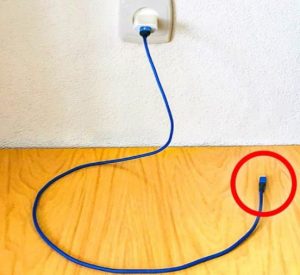If you’re anything like me, you probably have a long list of bad habits you’d love to kick to the curb someday. They might not be life-altering or incredibly destructive – after all, everyone has at least a few things they’d like to improve about themselves if given the chance – but the point is, these habits are real, and it’s perfectly normal to have them.

For some people, breaking a habit can be extremely tough because addiction plays a role. Things like smoking, drinking, gambling, or indulging in too much fast food can create real hurdles that require serious effort to overcome. But for other habits, the root cause is much simpler: pure habitual behavior. There isn’t any real barrier keeping you from changing them, other than maybe a little laziness or just being forgetful.
Let me give you a perfect example from my own life. For the longest time, I couldn’t seem to break the habit of leaving my phone charger plugged into the wall, even when it wasn’t charging anything. Now, you’re probably thinking: how hard can it really be to just unplug a charger when your phone is fully charged? Honestly, it’s not hard at all. Yet, despite countless reminders from my partner, I kept forgetting to do it. It wasn’t that I refused or didn’t care; the truth is, I barely thought about it.
In my mind, I figured leaving the charger in the outlet was harmless. What could possibly go wrong? It wasn’t like the charger was actively doing anything when not connected to my phone, right? For a long time, that’s where my thinking stayed. Then, one day, I stumbled across a post on social media that opened my eyes to the potential dangers of leaving chargers plugged in when they’re not in use.
After reading that post, I changed my behavior almost immediately. Not only was my partner thrilled that she no longer had to remind me, but I felt better knowing I had eliminated a small but unnecessary risk from our home. So, what exactly did I learn? Why is it a bad idea to leave chargers plugged in when they’re not being used?
It turns out that even in standby mode, chargers continue to draw a small amount of power from the outlet. It’s a low level of consumption, sure, but it’s still electricity being wasted. Multiply that by the number of outlets and chargers you leave plugged in, and it can add up over time. Not only does this contribute to a slightly higher electricity bill, but it also represents unnecessary energy waste — something many of us are trying to avoid these days.
Beyond the issue of wasted power, there’s the physical wear and tear to consider. When a charger is constantly plugged into the wall, it’s exposed to voltage fluctuations that can strain its internal components. Over time, this can degrade the charger’s effectiveness and increase the risk of it overheating. In rare but real cases, an overheated charger can smoke, melt, or, in the worst-case scenario, even start a fire.
And that’s not all. Think about the dangers if the tip of a plugged-in charger accidentally comes into contact with water or something metallic. Completing an electric circuit in that way could cause sparks, shorts, or worse. It’s not a risk many people consciously think about, but it’s there, lingering quietly in the background.
Then there’s another concern that hit particularly close to home for me: kids and pets. In my house, it’s pretty common to have little ones and furry friends running around. A charger hanging from the wall is just another fascinating object for them to pull, chew, or otherwise mess with. Aside from the danger to the charger itself if yanked too hard, there’s a bigger concern: children getting curious about electrical outlets in general. Leaving cords dangling can unintentionally encourage them to interact with something they should stay far away from.
Now, before you get too alarmed, it’s important to acknowledge that the overall risk of a house fire caused by a charger left plugged into an outlet is extremely low, especially with modern devices. Today’s safety standards, manufacturing regulations, and device improvements mean that leaving a charger plugged in is generally considered safe. However, “generally” doesn’t mean “always,” and even if the fire risk is minimal, the other downsides – wasted electricity, gradual damage to your charger, and potential safety hazards – still exist.
Personally, when I looked at it all laid out like that, the choice seemed simple. It only takes a few seconds to unplug a charger when you’re done using it. And those few seconds could save you a little money, extend the life of your electronics, and reduce even the tiniest chance of an accident.
Plus, if you’re trying to be more mindful and cut down on waste – both in terms of energy and materials – unplugging your charger when it’s not needed is such a small but meaningful step. It’s a habit change that doesn’t require any special equipment, fancy apps, or big lifestyle overhauls. It’s just a conscious decision to be a little more careful.
Looking back, I can’t believe I didn’t change my behavior sooner. It’s one of those things that once you know better, you wonder why you ever did it differently in the first place. Sometimes the hardest habits to break are the ones we don’t even realize we have.
Now, every time I unplug my charger after use, it feels like a tiny victory. It’s a small action, sure, but it’s rooted in mindfulness and care — both for my home and for the people I share it with.
So, how about you? Do you usually leave your charger plugged into the wall, even when you’re not using it? Have you ever thought about the impact it could have, even if it seems like no big deal? I’d love to hear your thoughts in the comments.





